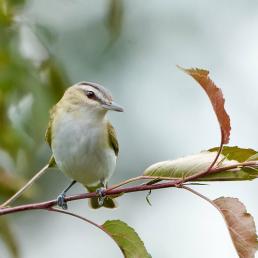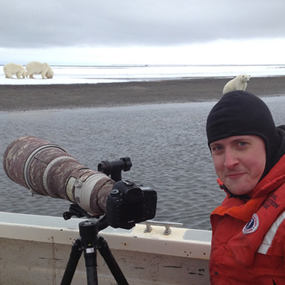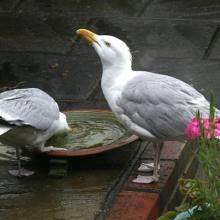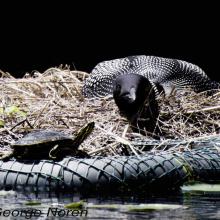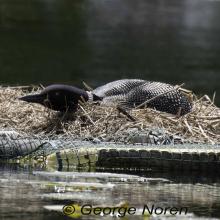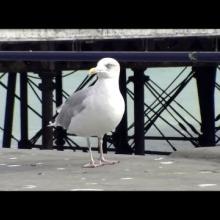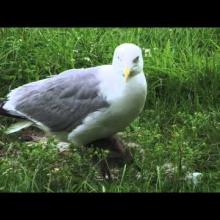

Join BirdNote tomorrow, November 30th!
Illustrator David Sibley and actor H. Jon Benjamin will face off in the bird illustration battle of the century during BirdNote's Year-end Celebration and Auction!
While many birds have hollow bones that make flying a breeze, diving birds are built differently. The bones of divers such as Common Loons are denser than those of songbirds and other expert fliers. With a lightweight skeleton, they’d be too buoyant to dive and chase fish. Instead, loons can kick their powerful legs and webbed feet to swim 200 feet or more underwater!
BirdNote®
Diving Birds are Dense
Written by Conor Gearin
This is BirdNote.
[Herring Gull calls and lakeshore sounds]
Hollow bones help birds like this Herring Gull sail around in the air without using much energy.
[Herring Gull calls]
But gulls resting on the water look remarkably different from the Common Loon floating nearby. A gull’s body rides high above the surface like a cork, while the loon’s back just tops over the water, like a submarine peaking above the waves.
[Common Loon calls]
That’s because these two birds are specialized for very different lifestyles. While the gull is adapted for efficient flight, the loon is fine-tuned for the underwater world.
[Splash of a bird diving, then rushing sounds of swimming underwater]
The loon’s bones are denser than those of gulls, songbirds, and other expert fliers. With a lightweight skeleton, they’d be too buoyant to dive and chase fish. Instead, loons can kick their powerful legs and webbed feet to swim 200 feet or more underwater!
Penguins can dive even deeper. Emperor Penguins submerge for up to 30 minutes and can reach depths of 1500 feet before coming up for air!
[Splash of bird resurfacing]
[Emperor Penguin call]
Dense bodies make these birds poor fliers or even flightless, in the case of penguins. But they are acrobats under the waves.
For BirdNote, I’m Ariana Remmel.
###
Senior Producer: John Kessler
Content Director: Allison Wilson
Producer: Mark Bramhill
Managing Producer: Conor Gearin
Bird sounds provided by The Macaulay Library of Natural Sounds at the Cornell Lab of Ornithology, Ithaca, New York. Herring Gull ML 220959691 recorded by Brad Walker, Common Loon ML 61477 recorded by William W. H. Gunn, and Emperor Penguin ML 389821081 recorded by Santiago Imberti.
BirdNote’s theme was composed and played by Nancy Rumbel and John Kessler.
© 2022 BirdNote March 2022
Narrator: Ariana Remmel
ID# diving-01-2023-03-02 diving-01
Reference:
https://www.birdwatchingdaily.com/news/science/how-birds-are-able-to-di…
https://beta.nsf.gov/news/how-penguins-seals-survive-deep-dives
